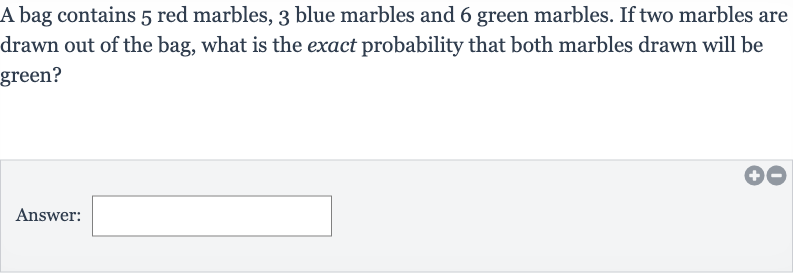AI tutor
Welcome to Bytelearn!
Let’s check out your problem:

A bag contains red marbles, blue marbles and green marbles. If two marbles are drawn out of the bag, what is the probability, to the nearest ooth, that both marbles drawn will be green?Answer:
Full solution
Q. A bag contains red marbles, blue marbles and green marbles. If two marbles are drawn out of the bag, what is the probability, to the nearest ooth, that both marbles drawn will be green?Answer:
- Calculate Total Marbles: Determine the total number of marbles in the bag.The bag contains red marbles, blue marbles, and green marbles.Total number of marbles = marbles.
- Calculate Probability of First Green Marble: Calculate the probability of drawing one green marble.Since there are green marbles out of total marbles, the probability of drawing one green marble is:
- Calculate Probability of Second Green Marble: Calculate the probability of drawing a second green marble after one has already been drawn.After drawing one green marble, there are now green marbles left and marbles in total.
- Calculate Combined Probability: Calculate the combined probability of both events happening (drawing two green marbles in a row).The combined probability is the product of the probabilities of each individual event..
- Perform Multiplication: Perform the multiplication to find the probability. .
- Simplify Fraction: Simplify the fraction to its lowest terms. can be simplified by dividing both the numerator and the denominator by their greatest common divisor, which is ..
- Convert to Decimal: Convert the probability to a decimal to find the nearest thousandth. (rounded to the nearest thousandth).
More problems from Time and work rate problems
QuestionGet tutor help
QuestionGet tutor help
